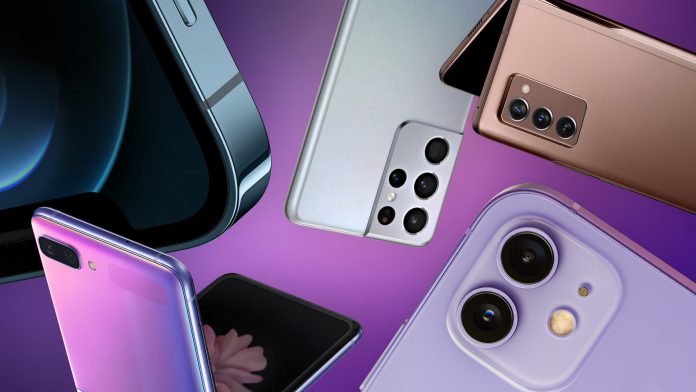What are the differences and similarities between the cell phone ranges of the two manufacturers? What are the strengths of each of them? That’s what we present in this article.
The two companies are the ones that offer the most complete and integrated ecosystems, but far from looking for a company or product line superior to another, the goal here is to present the alternatives on each side and help those who may still be in doubt between models of the two brands.
Features and performance of older models are still competitive.
In recent years, Apple’s line of phones has increased slightly, with the arrival of mini models and the maintenance of handsets from previous generations. Even so, the iPhone product range is still the smallest among the top five cell phone manufacturers today.
iPhone catalog and prices
At the end of 2021, Apple’s catalog includes eight models, four released in 2021, three in 2020 and one in 2019. The company usually keep some models of the previous generation in its catalog, lowering its prices. The exception is the SE model (2020), which functions as an input line but brings specifications of the then flagship iPhone 11 to an almost intermediate price range.
Because the Galaxy A, M and XCover lines do not compete directly with Apple models, we list above only models that occupy the same price range similar to the iPhone line. All devices —from the Z, S and Note lines—bring top-of-the-line processors and OLED displays, plus multiple cameras in the photo set. 5G support is included in all updated models of the lines in 2021, while for the 2020 devices it is possible to find them in 4G or 5G versions.
The prices charged by the two companies show an important difference between them: tend to fall rapidly —especially in Brazil, where after a year in the market the Galaxy S20 FE can be found for half the suggested price at launch.
Read also: The iPhone is expensive, but less than you might think
This has an impact on the devaluation and resale price of the handsets, which in the case of iPhones receive new system versions and security updates generally for more years, a difference that Samsung has tried to reduce in recent months.
You don’t get carried away by the trap of superlative numbers.
Another big difference between brands is how they approach the specifications of their devices. While Samsung takes advantage of its most varied product range to adopt features such as foldable screens, digital sensors under the screen, pen holder and even the selfie camera under the screen. While most of the examples the South Korean has not pioneered the market, Apple does not offer any of the features in 2021.
With Apple finally adopting screens with a 120 hertz refresh rate in 2021 on the iPhone 13 Pro line, one of the most noticeable differences for Android flagships has dropped. On the other hand, the Galaxy line continues to offer more versive camera sets, including additional lenses. At this point, it’s important to note that the iPhone 12 Pro Max defeated the S21 Ultra in our blind camera test in 2021 and the photographic part was one of the points apple invested most in, Apple’s highlight is the integration of its components, especially processors.
Both iOS and OneUI have their fans and critics, and it is not possible to separate the purchase of the devices from their respective operating systems. At this point, Apple’s vertical integration marks points again, with consistent operation on virtually all models offered in the current range (and even many older handsets). Critics, however, may point to the influence of the company’s “conservatism” in the adoption of features, even those that do not depend on hardware, such as widgets introduced in iOS 14.
The fact is that the convergence of resources does not stop, with the systems adopting characteristics released by the other. Even one of the great advantages of iOS —long-term support—is beginning to be copied by Samsung, which has announced an update policy that provides predictability for its customers, though far from what Apple offers for devices like the iPhone 6S, which is expected to receive iOS 15 security updates at least by September 2022, seven years after its release.
Read also: iOS 15: these are the most important features of the new system
iOS 15 approaches (literally) Android by opening Facetime calls to google/apple © system
The experience of use is a highly subjective point, and in this case it is not possible to say which option is best for this or that person. Generally speaking, those who like to customize the system usually find more options in the Android/OneUI field, while iOS stands out for more sensible standard options, including privacy and data protection, by the way…
This allows an app to access your location, microphone, or camera only once, until you close the app in question.
Not having to allow geolocation in the background immediately is also an advantage. From now on, you have to do it from the page dedicated to the application in question from the system settings.















